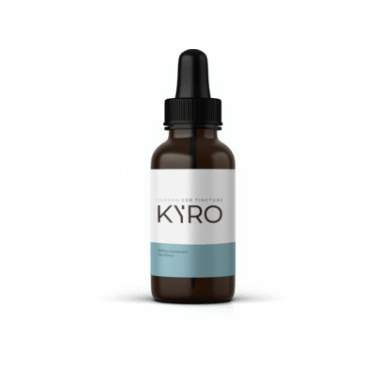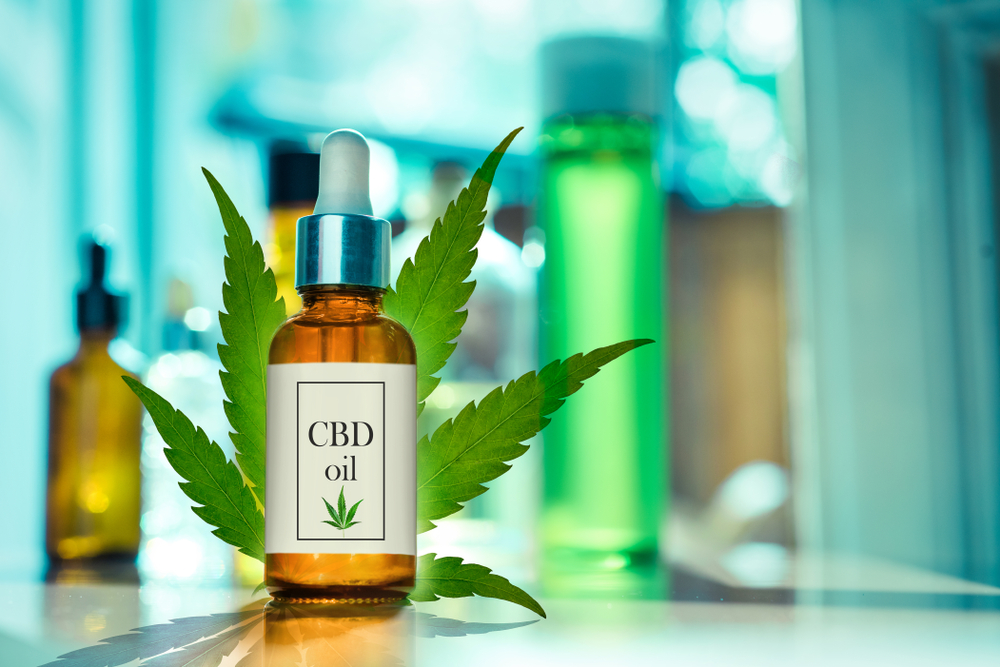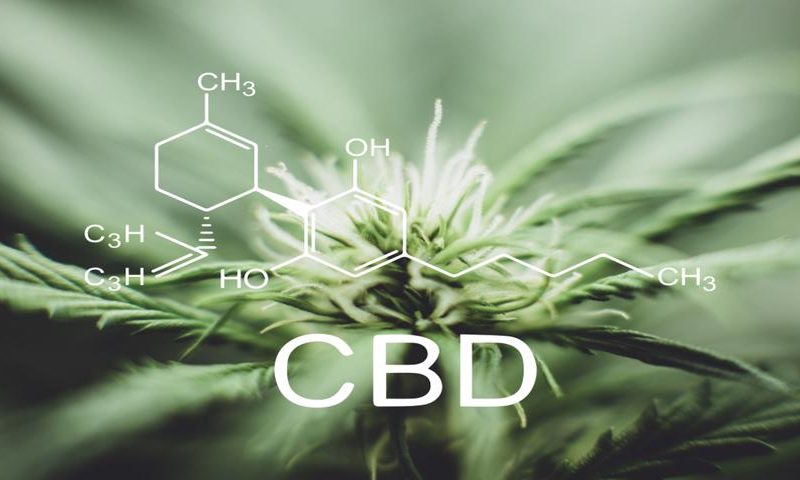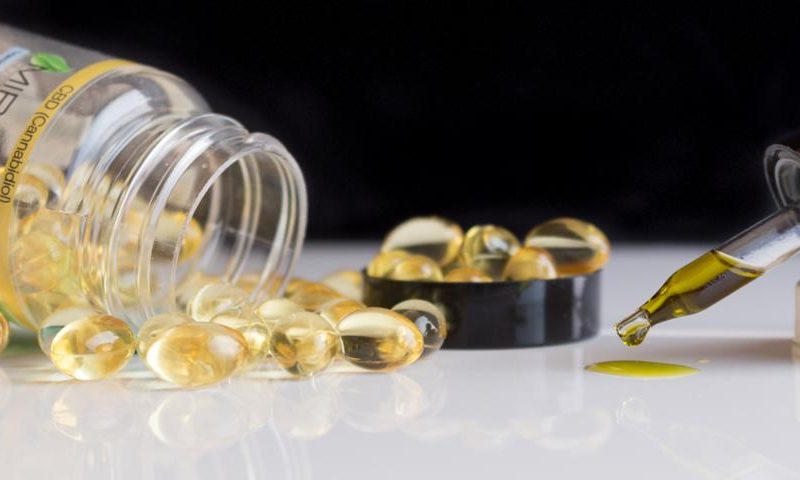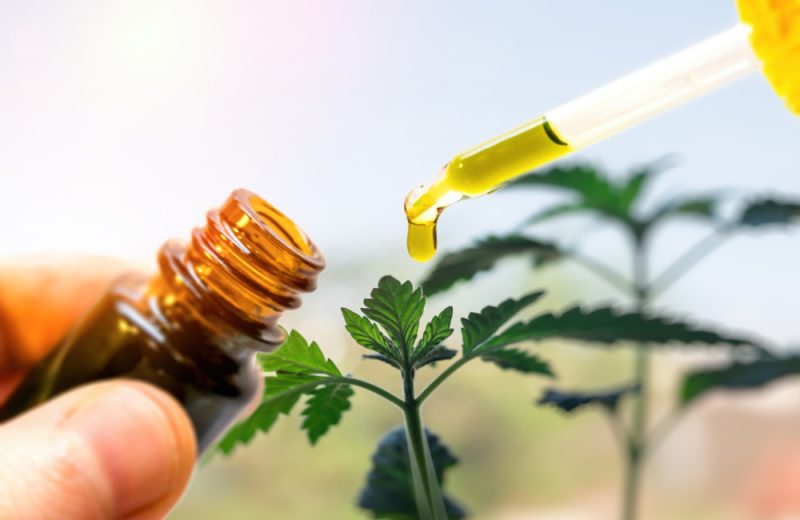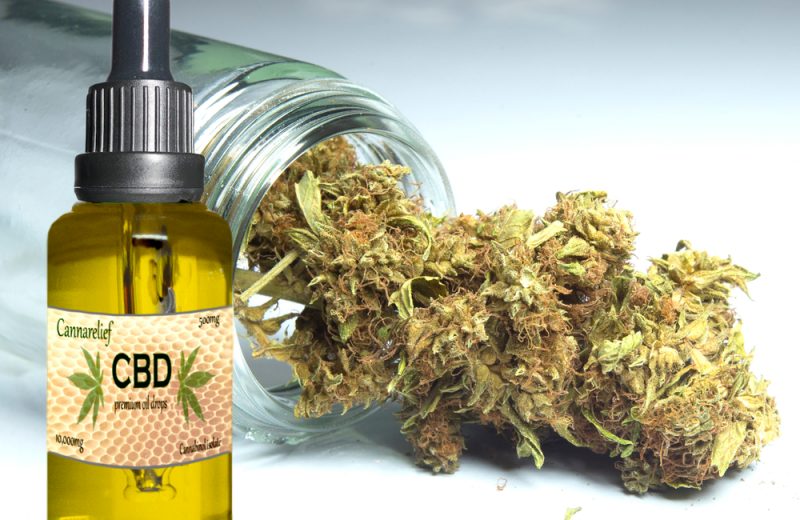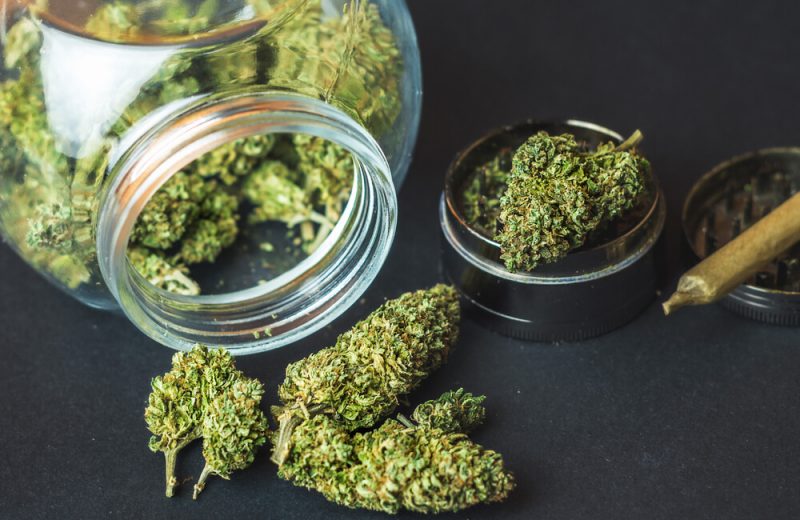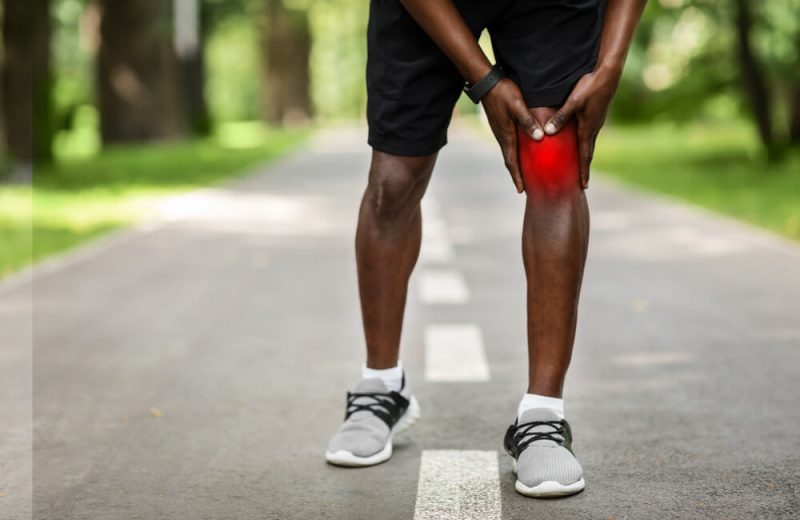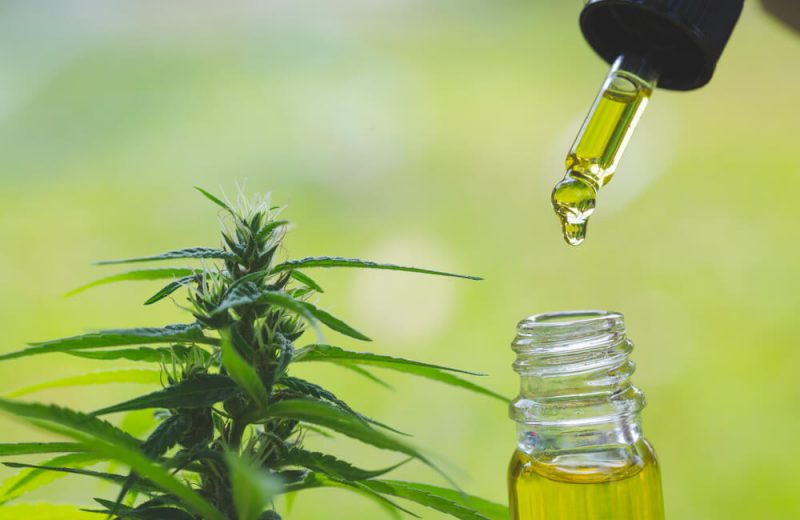There is no question that cannabidiol (CBD), a compound found in plants belonging to the cannabis family, may have incredible therapeutic benefits. Research has so far shown that it may help relieve pain, quell anxiety, and offer protective properties for the brain and nervous system, which is why CBD oil for Parkinson’s continues to gain so much attention.
Parkinson’s disease (PD) is a common movement-related neurodegenerative disorder that occurs when dopamine-receptive nerve cells (also called neurons) in the brain become damaged or die. The condition affects approximately 1 percent of Americans aged 60 or older.
Dopamine is a neurotransmitter that is critical for mental and physical well-being. It plays a vital role in regulating emotional responses and body movements, which explains why PD typically causes body motion problems like muscle stiffness, tremors, difficulty walking, slowed movement, and stooped posture.
More people are turning to CBD oil to mitigate symptoms of Parkinson’s disease, and it’s easy to side with them. While research is objectively limited and still emerging, some preliminary studies on CBD have shown promising benefits for those with PD. What’s more, cannabidiol is a non-psychoactive compound, which means it won’t make you feel high, cause intoxication or affect your memory like its controversial cousin THC.
This article covers how CBD oil may help with PD symptoms and potentially help as a preventative element.
How Can CBD Help With Parkinson’s Disease?
Let’s get one thing straight right away: Parkinson’s disease has no known cure. Furthermore, there is not much in the way of clinical evidence or medical research on CBD as a direct treatment for PD.
Only recently have people who live with the condition gotten interested in this natural, therapeutic approach.
Another big reason for the lack of medical evidence is that all cannabis products, including CBD and THC (marijuana), have been declared federally illegal for many decades until recently when the Agriculture Improvement Act of 2018 (aka Farm Bill 2018) was signed into law. The bill essentially de-listed hemp-derived CBD from being a Schedule I drug under the Controlled Substances Act.
For this reason, it was previously difficult for clinicians and researchers in the US to secure research funding to study CBD, restricting the amount of high-quality evidence and extensive clinical trials available.
Compounding the problem, most existing studies on the subject are rather small; others are either low quality or conflicting. For these reasons, medical professionals and scientists need to carry out large-scale studies and clinical trials to confirm any benefits of using CBD oil for Parkinson’s disease symptoms.
Still, some of the better quality studies have noted that CBD may have some promising effects, particularly when it comes to insomnia, anxiety, depression, and other non-motor symptoms of Parkinson’s disease.
Let’s take a closer look at these PD symptoms that may be effectively targeted with CBD oil:
Sleep

For patients dealing with PD, lack of good quality sleep, insomnia, and other sleep disruptions are a real struggle. This is often attributed to REM sleep behavior disorder (RBD), a condition characterized by nightmares, vivid dreams, and ‘acting out’ dreams during sleep.
Sudden, disruptive movements and talking during sleep are also common in Parkinson’s patients. Unfortunately, such sleep disturbances can worsen other PD conditions like depression, body instability, and anxiety. It’s a cyclical problem.
For PD patients having trouble sleeping or staying asleep, CBD may hold the key, and there are a few studies that seem to concur.
In one 2014 observational study published in the Journal of Clinical Pharmacy and Therapeutics, researchers noted that 4 participants suffering from both RBD and PD showed reduced REM sleep behaviors after CBD use.
This is corroborated by another study published in the same year in the journal Clinical Neuropharmacology, in which scientists found that CBD – when used alone or in combination with marijuana – may help with Parkinson’s-related sleep disturbances.
Pain
People living with Parkinson’s disease experience multiple types of pain that may include:
- Burning pain or aches radiating from the musculoskeletal system (muscles and skeleton)
- Numbness or sharp pain from the nerve roots and affected nerves
- Pain aches or pulses resulting from constant writhing and twisting movements
- Aching pain from muscle stiffness and tightness
In some people, a jabbing pain may occur suddenly and for no reason. Inner restlessness (medically known as akathisia) is another PD symptom that may also result in distress and faint pain.
Thankfully, CBD may help offer much-needed pain relief for those living with the disorder. There is a growing body of research to support this claim.
A 2016 rat model study, for instance, seems to show that CBD may help reduce inflammation and pain, both of which are known to affect the patient’s quality of life.
In another smaller clinical trial involving 22 people with PD, scientists found that cannabis containing both THC and CBD could help relieve pain.
The same pattern is witnessed in a 2018 study in which scientists confirmed that THC-containing CBD oil may be linked to reduced inflammation and chronic pain relief.
Evidently, there is a need for further research because similar (or better) results are yet to be replicated using a non-THC CBD product.
Tremors
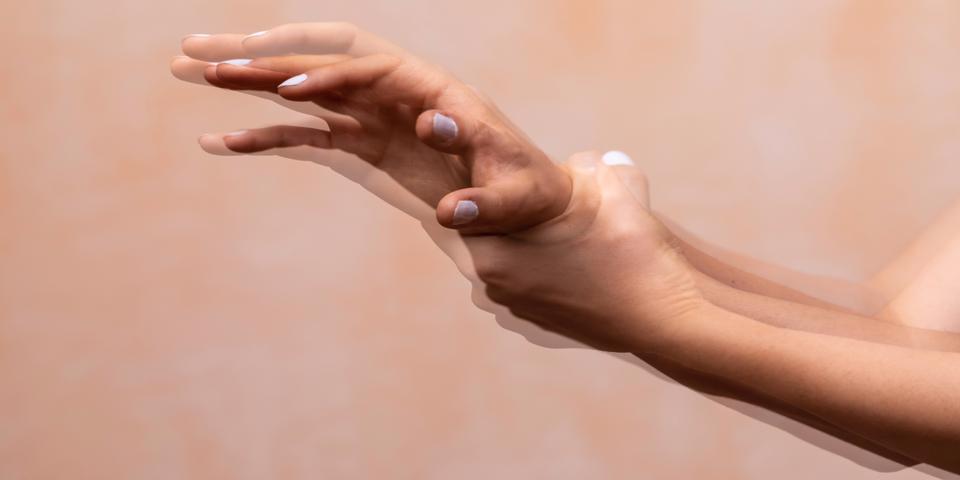
Experiencing tremors is perhaps the earliest and most recognizable symptom of Parkinson’s disease. Slight twitching, trembling and shaking of the feet, hands, or fingers are fairly common.
In the early phase, however, the patient may be the only one who is aware of these tremors because they usually occur when one is resting or sitting still. Worse yet, some of the most popularly used treatments for PD like Levodopa may lead to bouts of uncontrolled muscle twitches and cause the tremors to worsen.
For that reason, CBD may be a more befitting, natural remedy to help quell tremors and perhaps mitigate the side effects of conventional Parkinson’s disease medications.
Consistently, in one older study published in 1986 in the International Journal of Neuroscience, 5 patients suffering from PD-related uncontrolled muscle movements were given varying doses of CBD alongside conventional medicine. Patients reported a notable decrease in muscle movements and resting tremors after using CBD.
Psychosis

Sometimes patients with Parkinson’s disease may experience psychosis and a raft of other neuropsychological complications. Delusions, illusions, vivid dreams, hallucinations and delirium are some of the most common psychotic symptoms that may show up in later stages of the disorder.
In fact, according to an extensive 2016 study published in the journal Behavioral Neurology, up to half of the patients with PD experience psychosis.
While effective antipsychotic medications exist, the overwhelming majority have been found to cause adverse side effects, such as weight gain, stiffness, constipation, reduced sexual drive, and elevated risk of developing diabetes. It’s little wonder some people are turning to CBD.
Indeed, some studies have revealed that CBD may possess natural antipsychotic properties that can do wonders for PD patients.
In a small 2009 study conducted at the University of São Paulo, researchers noticed that giving PD patients with psychosis 150mg of CBD daily for 4 weeks resulted in a significant decrease in reported psychotic symptoms.
Even better news, those who received CBD treatment didn’t seem to show any negative side effects, reflecting on the fact that it may not only help cease psychosis symptoms but also facilitate motor recovery for people with Parkinson’s disease.[C1]
Prevention
As a progressive neurological condition, Parkinson’s disease can remain largely unnoticed and asymptomatic for many years.
As mentioned, there is no existing cure for the disorder. However, using CBD may help reduce the severity and frequency of PD complications that impact motor skills.
More importantly, by alleviating pain, anxiety, depression, and psychosis related to Parkinson’s disease, CBD may help patients experience a higher quality of life. But the bigger question on everyone’s mind is: can CBD help prevent Parkinson’s disease?
As far as CBD oil for Parkinson’s disease prevention goes, there is some good news as well as some bad news.
Good news first: recent research has shown that CBD may be capable of preventing PD from developing. On the flip side, the same study seems to suggest that CBD can’t do much to help treat Parkinson’s disease once it has begun.
So, it’s safe to conclude that CBD may only be helpful preventively and not curatively.
The bad news is that this research is not only very limited and fairly new but also confined to animals right now.
Yes, a few investigative studies on whether CBD could help prevent PD in humans have been conducted, but they returned inconclusive results. And it’s not difficult to see why.
First of all, most clinical trials and research studies use CBD as part of the treatment after a patient has been diagnosed, not as a preventive measure.
Even though genetics are known to play a role, it can be very tricky to pin-point who will eventually develop PD. In light of this, it is difficult for clinicians and researchers to know who could stand to benefit from using CBD as a preventive measure.
The disease can have adverse effects on the patient’s body system long before a diagnosis is made. In fact, by the time a person with PD shows motor symptoms, roughly 60 percent of dopamine-making neurons in the brain have already died or become severely damaged.
Even so, the positive outcome from animal studies means conducting the same or similar studies on human subjects is an avenue worthy of further investigation.
How to Use CBD for Parkinson’s Disease
There are numerous methods of consuming CBD, but a few have shown to be reliable, such as sublingual, oral, topical, and transdermal applications, as well as vaping.
Knowing which method will work best for you depends on a number of factors, including what PD symptoms you are targeting, your personal preference and, of course, the form of CBD you are consuming.
For those new to using CBD, here are the most common forms of CBD to consider if you have PD:
Tinctures
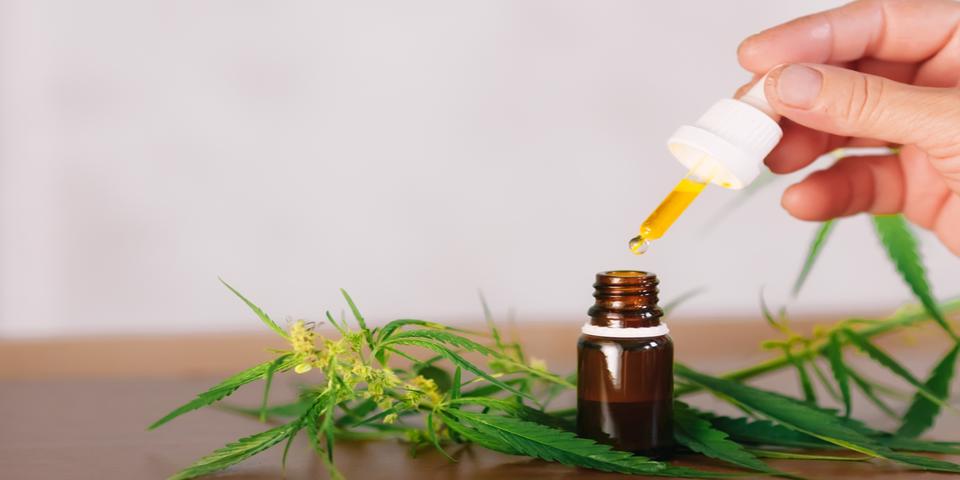
In traditional medicine, tinctures are herbal extracts blended with a solvent, usually vegetable glycerin, food-grade alcohol or other liquids. The same is true for CBD tinctures.
In some ways, you could say they are infusions containing CBD oil mixed with a solvent liquid, which makes it possible to be taken through oral administration via a dropper. A standard dropper can hold 1.5ml of CBD tincture and dispenses about 20 drops.
The best CBD oil tinctures are made by infusing fractionated coconut oil, hemp oil (MCT) or olive oil. By including healthy fats, tinctures make it easy for your body to absorb and process CBD for instant relief.
There are full-spectrum CBD tinctures, broad-spectrum CBD tinctures, and CBD isolates, which are concentrates that contain CBD in its purest form.
Full-spectrum tinctures contain everything from the hemp extract, including CBD, other cannabinoids, phytonutrients, terpenes, minerals, fatty acids, and so much more. It’s basically hemp extract which has been compounded in a solvent, such as glycerin, alcohol or carrier oil.
Broad-spectrum tinctures, have all the ingredients and deliver all the benefits of the full-spectrum oil except that it has no THC. This makes it a perfect choice for anyone who may be worried about failing a drug test.
CBD tinctures can be taken by swallowing, applying under the tongue (sublingual), or mixing them into drinks and food. When taken sublingually, CBD will be absorbed into the bloodstream quickly and you can expect to see results in less than 1 hour.
Topicals
By design, CBD topicals are meant for transdermal application, which means they should be applied directly to the skin. In today’s market, you can find a variety of CBD topicals that include salves, creams, lotions, balms, and CBD-infused transdermal patches, just like nicotine patches.
Because they are thought to have great pain-relieving and anti-inflammatory properties, CBD topicals are usually used to target localized conditions, especially pain, muscle spasm, joint aches, and stiffness.
The notable downside is that topicals take several hours before their effects are felt. According to Daily CBD Mag, the effects of CBD topicals take around 6 hours to develop. Even so, they are great for treating Parkinson’s symptoms like restlessness, pain, aches, and stiffness in feet, joints, and hands.
If not blended well, it may be difficult to calculate the right dose of CBD from topicals. They also have low bioavailable CBD and tend to take longer to be absorbed into the bloodstream.
Vaping
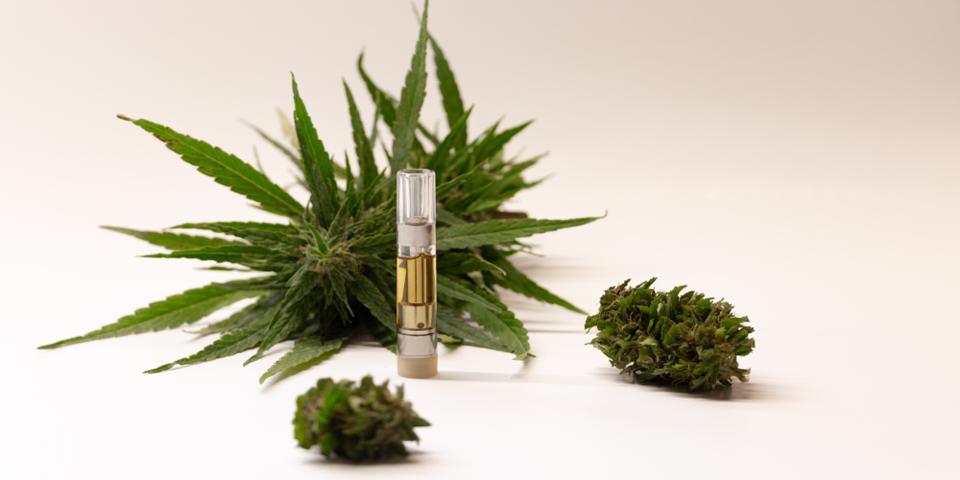
Vaping involves vaporizing CBD oil and inhaling the resultant CBD-rich vapor or fumes. Most people prefer to vape using a vaporizer equipped with a cartridge filled with CBD oil, while others choose to inhale CBD concentrates like sugar waxes using vape pens.
In either case, the effects of vaping CBD should be felt quickly, with most people feeling the effects in less than 10 minutes. You’ll absorb between 34 and 56 percent of the CBD you vaped.
CBD vaporizers come in numerous shapes, sizes and forms. You can find huge vaporizers (also called desktop vaporizers) that have to be plugged into an outlet to work. Alternatively, you can use small, portable vape pens.
Find out more about how to vape CBD oil like a pro.
Note, however, the safety and health effects of vape products used over the long-term are not well-documented. Some scientists believe that vaping might aggravate respiratory symptoms like sore throat, coughing, wheezing, and asthma – and may even damage lung air sacs and tissue.
In September 2019, state and federal health agencies like the CDC and the FDA started investigating an outbreak of a serious lung ailment linked to vaping.
Edibles and Capsules
CBD edibles get little press, but they are a great choice for PD patients who experience tremors and are unable to dose properly with CBD oils or tinctures.
It’s simple: if you don’t like the weedy taste of oral CBD, you can bake it into cookies, cakes, biscuits, muffins, doughnuts, or other favorite food items.
As is the case of topicals, figuring out the exact amount of bioavailable CBD in the edibles can be a challenge, so dosage might not be as accurate as with other forms such as tinctures and oils.
The upside of using edibles is that you can discreetly get a dose of CBD into your body. Pre-made CBD edibles are also available for purchase from dispensaries, online CBD stores, and other vendors.
Gummies are a great choice for CBD edibles because they are sweet and flavorful. You can also buy edible CBD in the form of capsules, truffles, mints or pills. They do an excellent job of masking that earthy taste of natural CBD oil.
Because of varying bioavailability and methods of absorption, the effects of CBD edibles should be felt within 2 hours. In most cases, you’ll absorb only 20-30 percent of the CBD present in the edible you ingest.
Beverages

In addition to baking CBD into edibles and other food items, CBD oil can be mixed into your favorite drink –cocktails, smoothies, tea, coffee, drinking water, juice, pre-workout formula … the whole shebang.
As previously stated, sublingual CBD products kick in faster than edibles and other oral products that have to be absorbed by the stomach and other parts of the digestive tract.
So, if you are looking for faster results, sip your CBD beverage and let it sit in your mouth for a while. You can swish-swash the drink under the tongue to allow optimal sublingual absorption.
Because your drinks or beverages will dilute the product, be sure to prepare them using high-strength CBD oils or tinctures. This will increase the amount of bioavailable CBD and boost the absorption rate into the bloodstream.
The bottom line is that there are myriad ways to consume CBD, and there is no one right or wrong way. The best way to do this is to try different forms of CBD and methods of consumption, and figure out what works optimally for you.
The same is true for dosing. To maintain safety, you should stick to micro-dosing, a method in which you are recommended to start with a low dose and move your way up until you hit the sweet spot.
The FDA and Future Research: What’s Ahead for CBD and Parkinson’s?
Sellers of CBD oil are very careful to avoid marketing their products as having any specific medical benefits for PD because they’ll have to seek clearance from the Food and Drugs Administration (FDA).
Instead, most CBD products are marketed as food supplements, which is one of the most unregulated segments in the US.
Today, the FDA has neither cleared nor approved any CBD product for the treatment of Parkinson’s disease or PD symptoms.
However, we can take heart that the FDA approved Epidiolex in 2018, making it the first brand-name prescription CBD formulation green-lighted for use in treating two kinds of rare childhood epilepsies: namely Dravet syndrome and Lennox-Gastaut syndrome. So, there is clearly some precedence.
With multiple studies and clinical trials in the pipeline, we may see an FDA-approved CBD oil for Parkinson’s sooner rather than later.
A brand new study based out of the Federal University of São Carlos, for instance, has shown promising results in treating anxiety-induced PD tremors. While this is a rather small study involving 24 patients with Parkinson’s disease, it has certainly opened doors to more extensive clinical trials to confirm that the results are indeed true.
Meanwhile, researchers from the University of Colorado are carrying out another promising clinical trial on the safety and efficacy of CBD on PD tremors.
Conducted in partnership with GW Research Ltd and the Colorado Department of Public Health and Environment, the landmark trial study is in its 2nd phase.
We can’t forget to mention that there are many areas where cannabis experts, clinicians, and medical researchers need to work on when it comes to CBD oil for Parkinson’s disease.
Most notably, researchers must conduct large-scale studies and clinical trials to establish whether CBD can help prevent PD in humans. That’s because the vast majority of existing and ongoing studies have only been performed on animals.
Side Effects and Limitations of CBD Oil for Parkinson’s

As the World Health Organization (WHO) pointed out in their Cannabidiol Critical Review report, CBD is generally well-tolerated and safe, especially when used to treat anxiety.
The cannabis plant has two major cannabinoids – CBD and THC (tetrahydrocannabinol), both of which are thought to help relieve muscle spasm, alleviate pain, nausea, and calm anxiety. These therapeutic benefits can be enjoyed by anyone regardless of age, from children to older adults.
Unlike THC, however, CBD isn’t intoxicating and doesn’t produce the feeling of high typically associated with marijuana use. This makes it an attractive, natural way for people to treat a variety of PD symptoms, from anxiety and depression to pain and sleep disorders.
There are well-established and widely used prescription medications for PD on the market. So CBD use is not the only way to relieve Parkinson’s symptoms.
One of these, Levodopa (a dopamine-replenishing drug), is the most popular and most effective treatment for Parkinson’s disease in the US.
By replacing dopamine and bringing its levels to normal, Levodopa helps tackle the vast majority of motor-related symptoms of PD, such as muscle stiffness, tremors, stooped posture, and difficulty walking.
Unfortunately, Levodopa doesn’t do much in the way of addressing non-motor symptoms of PD. That’s especially true for the frequently associated symptoms of poor quality sleep, depression, moodiness, and anxiety; all of which can adversely affect the patient’s quality of life.
What’s more, long-term use of this medicine may lead to unpleasant side effects like nausea, delirium, anxiety, irritability, and medication-induced tremors.
That’s where CBD may come in handy because it can not only take care of the non-motor symptoms of Parkinson’s disease but also address possible side effects of PD medications such as Levodopa.
That is not to say that CBD use doesn’t come with any side effects. It does, but they are usually mild and may include:
1- Dry Mouth

Dryness of the mouth is a pretty common side effect of taking any cannabinoid, not just CBD. Whether you vape, apply sublingually or eat edibles, you will probably feel like your mouth is filled with cotton balls after consuming CBD.
The reason behind this dry sensation is because CBD interacts with endocannabinoids and cannabinoid receptors in your salivary glands inhibiting the secretion of saliva. Indeed, research studies have shown that the submandibular gland (which produces nearly two-thirds of saliva) has a high concentration of cannabinoid receptors.
This can be easily rectified by drinking plenty of fluids before, during, and after taking CBD.
2- Diarrhea and Appetite Issues

The effects of CBD usually vary from one person to another. In some people, CBD use may result in passing a voluminous, watery stool.
In a 2017 clinical research studying the effects of CBD on people with psychotic disorders and epilepsy, researchers noted that some participants experienced mild diarrhea as well as changes in appetite and tiredness.
It is believed that CBD may cause a slight disturbance to the subtle balance that exists among gut bacteria, leading to diarrhea but there is no conclusive research to confirm this.
3- Low blood pressure, lightheadedness, and drowsiness

Among the many potential health benefits of CBD oil, lowering blood pressure stands out because it can help people with hypertension reduce the risk of diabetes, heart disease, and stroke.
This, however, can be a different story for people with normal blood pressure. In one 2017 study, scientists noted that a high single dose of CBD causes a slight dip in blood pressure.
The blood pressure drop could make you feel lightheaded or drowsy after a few minutes or hours of consuming CBD, depending on the strength and method of consumption.
4- Fatigue

Even though cannabidiol is typically well-tolerated, it can cause negative reactions such as fatigue in certain individuals. This sense of weariness is usually accompanied by other effects such as drowsiness, lightheadedness, and mild diarrhea.
While this 2017 study noted tiredness/fatigue as one of the side-effects, it concluded that CBD still has a more favorable profile than most medications.
It’s worth keeping in mind that CBD has also been found to interact with multiple over-the-counter and prescription medications.
Before you start using CBD oil, be sure to check with your doctor to see whether it is compatible with other medications you are taking.
Interestingly, grapefruit and CBD have the same effect on specific enzymes that metabolize drugs, so be on the lookout for drugs that have a “grapefruit warning” on the label.
Note also that CBD is not suggested as a replacement for PD treatment. Instead, research suggests CBD might be helpful in treating some of Parkinson’s other symptoms, which means it is cut out to work in tandem with effective medications like Levodopa.
What CBD Oil Means for Parkinson’s Patients
In sum: the research is not definitive but there are some promising indicators and early study seems to show that CBD might help mitigate some of PD’s most unpleasant symptoms.
Parkinson’s disease is a neurodegenerative disorder in which neurons that control body movements in the brain are destroyed or die.
Existing research, although limited, suggests that CBD may help address non-motor symptoms of PD like depression, sleep disruption, pain, and anxiety.
It has also been linked to a reduction of tremors, muscle spasms, and psychosis symptoms, as well as an overall improvement in the patient’s quality of life.
Top garners optimal results: people with PD might want to consider the top ways of consuming CBD like topicals, edibles, tinctures, beverages, and vaping.
Patients should also understand that CBD use may result in a few side effects like tiredness, diarrhea, drop in blood pressure, changes in appetite, drowsiness, lightheadedness, and sometimes changes in weight. The good thing is that they are usually very mild.
Moreover, no CBD medication has so far been cleared or approved by the FDA for Parkinson’s disease. Perhaps that is because preliminary research is thin, fairly new, and sometimes inconclusive.
More work should be done. For now, it is imperative that you consult your doctor if you are a Parkinson’s patient considering CBD oil treatments.

